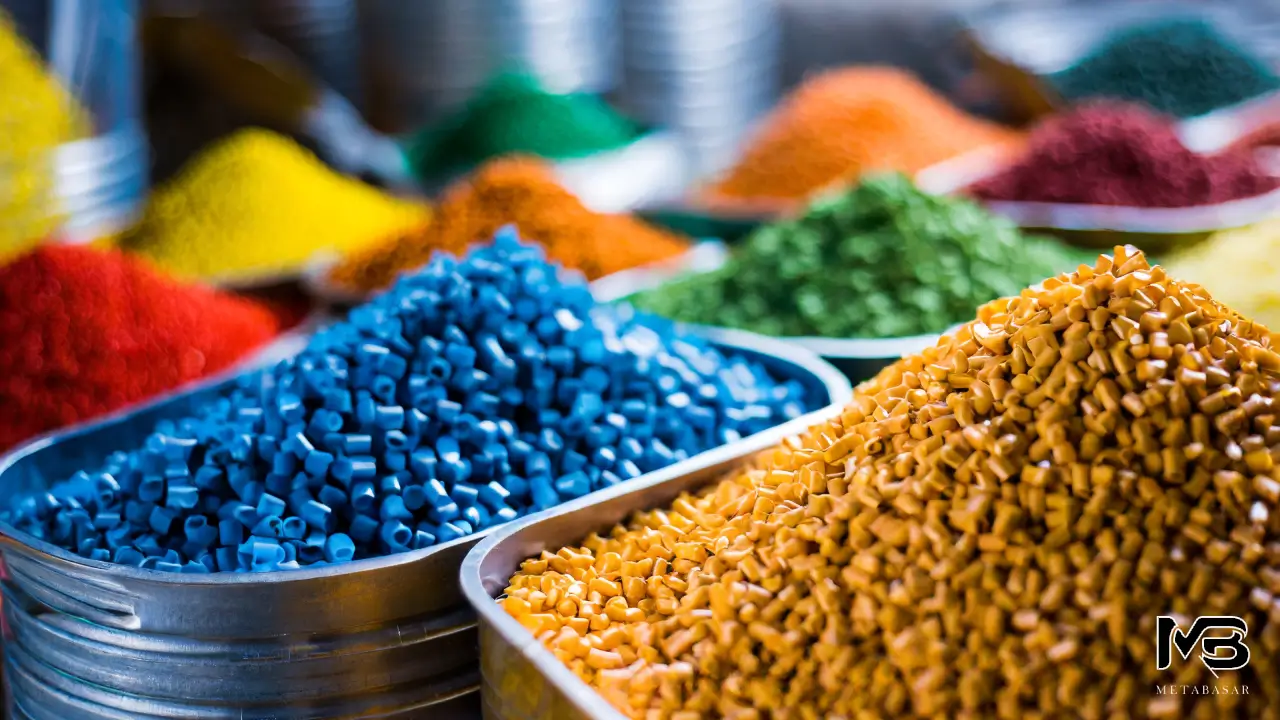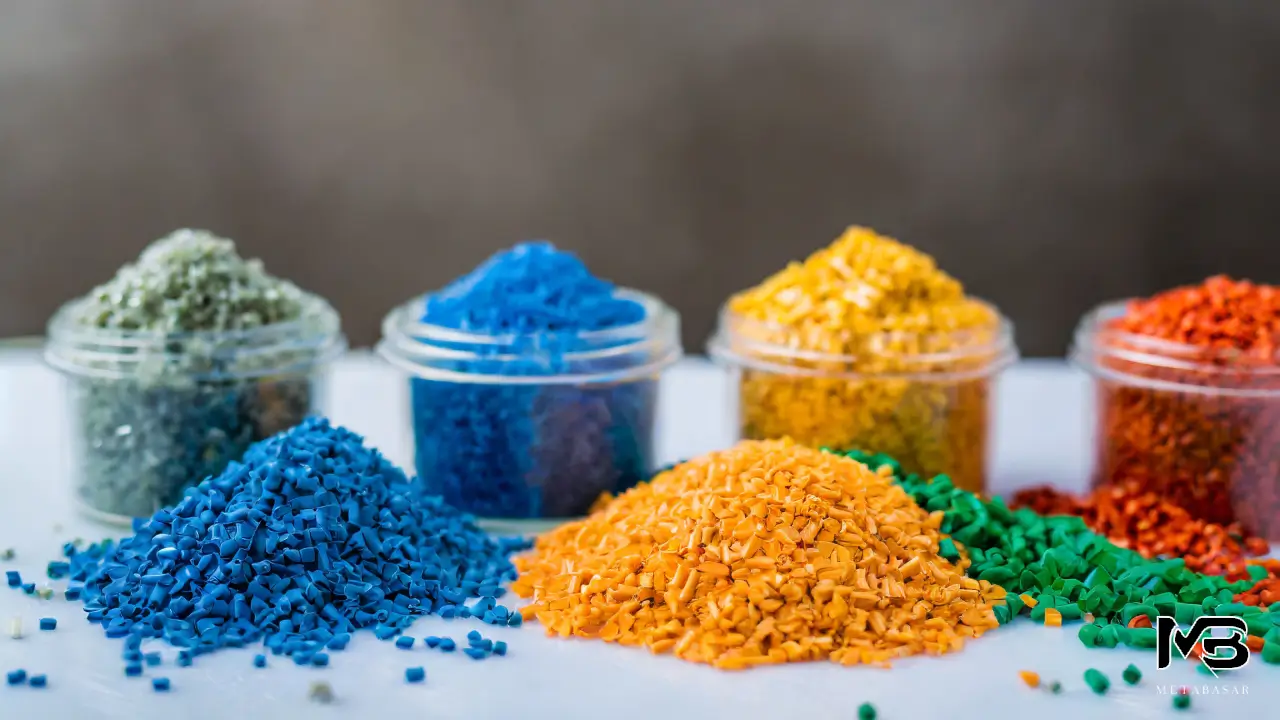
Masterbatch, a concentrated mixture of pigments, additives, and resins, plays a crucial role in the plastic industry. It is used to color plastic products, improve their performance, and meet specific requirements. With its ability to provide color accuracy, consistency, and durability, masterbatch has become an essential component in plastic manufacturing processes such as injection molding, extrusion, lamination, textiles, and packaging.
Table of Content
- 1 Understanding Masterbatch
- 2 Different Types of Masterbatch
- 3 Processing with Masterbatch
- 4 Coloring Techniques with Masterbatch
- 5 Benefits of Masterbatch
- 6 How to Use Masterbatch
- 7 Different Types of Masterbatch
- 8 Applications of Masterbatch in Plastics Industry
- 9 Challenges with Masterbatch in Plastics Industry
- 10 Frequently Asked Questions
- 10.1 What is masterbatch and how is it used in the plastics industry?
- 10.2 What are the benefits of using masterbatch in plastic manufacturing?
- 10.3 Are there different types of masterbatch available for different applications?
- 10.4 How can I choose the right masterbatch for my specific plastic product?
- 11 Conclusion
Understanding Masterbatch
Masterbatch, in pure form, consists of solid crystals of raw materials fully compounded in a polymer carrier. It is widely utilized in various plastic applications, including injection molding, extrusion, lamination, textiles, and packaging.
The primary function of masterbatch is to distribute colors, pigments, fillers, and additives in thermoplastics and polymer products, ensuring product consistency and durability. Its versatility makes it suitable for a range of industries, including consumer goods, personal protective equipment, food contact materials, and packaging materials. The production process of masterbatch involves the dispersion of raw pigments or additives in a carrier resin, resulting in a fully compounded material ready for plastic production.
Definition and Usage of Masterbatch
Masterbatch, in pure form, consists of solid crystals of raw materials fully compounded in a polymer carrier. It is widely utilized in injection molding, extrusion, lamination, textiles, and packaging applications. Its primary function is to distribute colors, pigments, fillers, and additives in thermoplastics and polymer products, ensuring product consistency and durability.
Masterbatch is suitable for food contact, consumer goods, personal protective equipment, and packaging materials. The production of masterbatch involves the dispersion of raw pigments or additives in a carrier resin, resulting in a fully compounded material ready for plastic production.

Importance of Masterbatch in Plastics
Masterbatch plays a critical role in achieving opacity, transparency, color, stiffness, and durability in plastic products. It allows for higher accuracy in color development, ensuring product consistency in plastic pellets. The use of masterbatch in plastic production provides process stability, reducing production-related defects.
It enhances the shelf life of plastic products, encapsulating raw pigments, additives, fillers, and colorants. Masterbatch is utilized in a wide range of plastic applications, such as extrusion, injection molding, and lamination, contributing to color accuracy, consistency, and product durability.
Different Types of Masterbatch
Conventional masterbatch, also referred to as color masterbatch, is a concentrated mixture of pigments in a carrier material, enhancing the distribution of colors in plastic products. Additive masterbatch incorporates polymer additives, fillers, and viscosity modifiers, facilitating product development and ensuring product consistency.
Specialty masterbatches, designed for specific applications such as UV stability and flame retardancy, serve a crucial role in the production of fully compounded material with higher accuracy. Commonly used white masterbatch, black masterbatch, and color masterbatch play a pivotal role in achieving desired aesthetics in plastic products and packaging materials. Additionally, specialty masterbatches like fluorescent, metallic, and pearlescent masterbatches offer unique properties for distinctive product design and development.
Brief on Commonly Used Masterbatches
- White masterbatch, containing titanium dioxide, is widely used in plastic products, providing opacity, brightness, and color consistency.
- Black masterbatch, incorporating carbon black, is essential for achieving durability, UV stability, and color consistency in plastic products.
- Color masterbatch offers a wide range of color options, ensuring a uniform distribution of pigments in plastic products.
- Fluorescent masterbatch, used in consumer goods, provides high visibility, color consistency, and product differentiation.
- Metallic masterbatch, often used in packaging materials, provides a metallic luster, enhancing product aesthetics.
Specialty Masterbatches
In addition to commonly used masterbatches, there are specialty masterbatches designed for specific applications in the plastic industry.
- UV masterbatch, a specialty masterbatch, protects plastic products from UV degradation, extending product durability and shelf life.
- Antistatic masterbatch, used in consumer goods, prevents static discharge, enhancing product safety and consumer satisfaction.
- Flame retardant masterbatch, a vital application in electronics, textiles, and packaging, enhances product safety, stability, and compliance.
- Pearlescent masterbatch, utilized in packaging and consumer goods, provides a pearlescent luster, enhancing product aesthetics.
- Conductive masterbatch, used in electronics, textiles, and packaging, ensures electrical conductivity, durability, and product consistency.
Processing with Masterbatch
Masterbatch plays a crucial role in plastic extrusion processes, ensuring a uniform distribution of pigments, colorants, additives, and fillers in plastic products. It enhances opacity, color consistency, and accuracy, contributing to product quality in extrusion processes.
The addition of masterbatch in extrusion reduces production-related defects, ensuring final product consistency. It contributes to the distribution of colors, pigments, additives, and fillers, ensuring product consistency in plastic products.
The Role of Masterbatch in Extrusion
Masterbatch, in extrusion, ensures a uniform distribution of pigments, colorants, additives, and fillers in plastic products. It enhances opacity, color consistency, and accuracy, contributing to product quality in extrusion processes.
Masterbatch in extrusion provides higher accuracy in dispersion, process stability, and consistency of color development. It contributes to the distribution of colors, pigments, additives, and fillers, ensuring product consistency in plastic products. The use of masterbatch in extrusion processes reduces production-related defects, ensuring final product quality.
Issues to Consider When Using Masterbatch
While masterbatch offers many advantages in plastic production, there are a few considerations to keep in mind.
- The dispersion of masterbatch in carrier resin, extruder, and polymer material impacts final product consistency and color accuracy.
- Higher addition rates of masterbatch in plastic products may affect material viscosity, mold, heat treatment, and process stability.
- The distribution of masterbatch colorants, pigments, fillers, and additives in polymer materials requires a higher shear rate in extrusion processes.
- The transparency, opacity, durability, and shelf life of plastic products might be affected by the addition of masterbatch in high tonne natural polymer materials.
- Careful consideration of masterbatch addition rate, raw materials, dispersion, and extruder settings is essential for product development and consistency.
Coloring Techniques with Masterbatch
Masterbatch offers several color addition techniques in plastic production, ensuring color accuracy, consistency, and durability in plastic products.
How Does Masterbatch Compare with Other Coloring Methods?
Masterbatch, in comparison to other coloring methods, provides a concentrated mixture, enhancing color accuracy, consistency, and durability in plastic products. It ensures a longer shelf life of raw pigments, additives, fillers, and colorants compared to pure form colorants. The final product design benefits from process stability and higher accuracy in color dispersion.
Masterbatch offers a polymer carrier material, improving product development, durability, opacity, transparency, and color consistency in plastic products. It is widely used in food contact, packaging, textiles, consumer goods, meeting industry standards.
Benefits of Masterbatch
Masterbatch enables higher accuracy in color dispersion, enhancing product consistency in plastic products. It improves process stability, ensuring a uniform distribution of colors in polymer resin. Using masterbatch reduces additive addition rate, optimizing production of masterbatch per tonne of natural polymer.
It enhances color concentrates, offering a concentrated mixture of raw materials for final product development. Masterbatch ensures durability, opacity, transparency, and color consistency in plastic products.
How to Use Masterbatch
The masterbatch is added in a pellet form, simplifying the injection molding and extrusion process. It’s fed into the extruder, where it is compounded with carrier resin, additives, and pigments.
Masterbatch is mixed with polymer pellets, providing a fully compounded plastic masterbatch material. During heat treatment, it disperses uniformly, ensuring color consistency in the final product. Personal protective equipment is essential when handling masterbatch materials in the production process.
Different Types of Masterbatch
There are different types of masterbatch available for different applications in the plastic industry, such as color masterbatch, additive masterbatch, black masterbatch, white masterbatch, and special effect masterbatch.
Applications of Masterbatch in Plastics Industry
Masterbatch finds its applications in a wide range of plastic products, contributing to color accuracy, consistency, durability, opacity, transparency, and product performance.
Challenges with Masterbatch in Plastics Industry
Achieving a high shear rate in masterbatch production impacts the dispersion of additives in polymer resin. Ensuring masterbatch dispersion in extrusion, molding, and packaging processes is a challenge.
The addition rate of masterbatch needs to be carefully monitored to avoid color variations in plastic products. Masterbatch production must adhere to industry standards, particularly in food contact materials. Maintaining process stability, color accuracy, and final product consistency in masterbatch production is critical.
Frequently Asked Questions
What is masterbatch and how is it used in the plastics industry?
Masterbatch is a concentrated mixture used in the plastics industry to add color, enhance performance, or meet specific requirements.
It is added to raw plastic materials during processing and allows for precise control over the color and properties of finished plastic products. Masterbatch can come in different forms such as pellets, powder, or liquid.
What are the benefits of using masterbatch in plastic manufacturing?
Using masterbatch in plastic manufacturing offers several benefits. It enhances the color, opacity, and other properties of plastic products.
Additionally, it reduces waste and production costs compared to traditional colorant addition methods. Masterbatch can also be customized for specific applications like UV protection or flame retardancy, ensuring consistent quality and performance of the final product.
Are there different types of masterbatch available for different applications?
Yes, there is a wide range of masterbatch types available to suit various applications in the plastic industry.
These include color masterbatch for adding pigments, additive masterbatch for enhancing properties like UV resistance or flame retardancy, and filler masterbatch for reducing costs and increasing strength with fillers like calcium carbonate or talc.
How can I choose the right masterbatch for my specific plastic product?
Consider the specific plastic type and intended application. Determine the desired color, UV resistance, and other needed properties. Select a masterbatch compatible with the base resin and processing conditions.
Consult a supplier or expert for the best option.
Conclusion
In conclusion, masterbatch is a versatile and essential component in the plastics industry. It offers numerous benefits such as cost-effectiveness, color consistency, and improved processing efficiency. With various types available, you can choose the right masterbatch for your specific plastic product and application.
However, it is important to consider factors like compatibility and processing issues when using masterbatch. Despite these challenges, the advantages of using masterbatch outweigh the drawbacks. By understanding the role and importance of masterbatch, you can enhance the quality and performance of your plastic products. So, whether you are involved in extrusion or coloring techniques, masterbatch can significantly impact the success of your plastics manufacturing.
